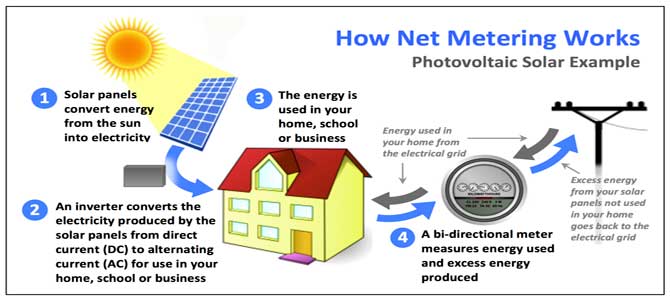Net metering caps are being hit across the Northeast and California. The problem? In a post-ITC world, these [now uncertain] markets are expected to be the most robust for commercial and industrial (C&I) solar.
In late November, the Massachusetts State House and Senate failed to come to an agreement on legislation to lift the state’s net metering caps. The industry now looks to January to see if any action can be taken. In the meantime, the future of Q3’s #3 solar market – with 963MW and 9,400 solar jobs – is at risk. And with the race to have projects placed in service by December 31, 2016, Massachusetts will fall far short from achieving the record-shattering 2016 that was expected. The market remains in limbo, with few exceptions.
In California, reports predict that San Diego Gas and Electric could hit their net energy metering cap in mid-2016, Southern California Edison in Q1 2017, and Pacific Gas and Electric in the third quarter of 2016. The CPUC is expected to make a decision on net metering 2.0 any day now, and the industry is watching. Stay tuned to CALSEIA for details.
In lower profile markets, Connecticut, has surged to a top 15 solar market (#11 in Q3 2015), largely thanks to its successful ZREC program [with which solar development coincides]. Unfortunately, however, the $10 million municipal virtual net metering (VNM) cap has been hit, and it was hit quickly.
Unlike Massachusetts, for example, where information on the available megawatts is listed publicly on the web, Connecticut’s is not readily available– and handling of expired or ineligible projects can be very nontransparent. Moreover, 11 projects, many of which were awarded ZREC contracts this summer, were left “stranded” given this cap. The Renewable Energy and Efficiency Business Association (REEBA) is calling for the cap to be increased to $60M to allow these shovel-ready projects to proceed, and to bring development to the 2017 finish line.
In August, we reported that New Hampshire was nearing its 50MW net metering cap [after taking over a decade to reach 2MW]. On the C&I side, the market has grown significantly due in part to a successful rebate program for projects up to 500kW. Liberty Utilities and the New Hampshire Electric Cooperative have hit their respective caps on net metered customers, and Eversource, the state’s largest utility, will soon hit its own cap; 6.1MW remain at press time.
This problem is not going away any time soon. The NC Clean Energy Technology Center recently reported that 27 U.S. states were either studying or changing their net-metering policies in the third quarter of 2015.
The solution to a more long-term, sustainable market? Data-based, careful rate design that’s fair for the individual (even if that means some demand charges must be thrown in). This is why increasingly, solar companies are ensuring they’re intervening in the rate cases. Once a rate has been carefully designed and established, the rationale for any cap disappears. We’re confident the result of any such process looks a lot more like current net metering than otherwise – especially for low-exporting C&I solar systems.
Sol Systems is a solar energy finance and investment firm. The company has facilitated financing for over 375MW of solar projects on behalf of Fortune 100 corporations, insurance companies, utilities, banks, family offices, and individuals. Sol Systems provides secure, sustainable investment opportunities to investor clients, and sophisticated project financing solutions to developers. The company’s tailored financial services range from tax structured investments and project acquisition, to debt financing and SREC portfolio management. Inc. Magazine named Sol Systems on its annual Inc. 500 list of the nation’s fastest-growing private companies for a second consecutive year, ranking it No. 6 in the nation’s top solar companies in 2014.
This article has been published here with permission by the PVBuzz Media team from the original article written by Sara Rafalson.











Comments